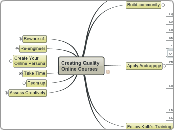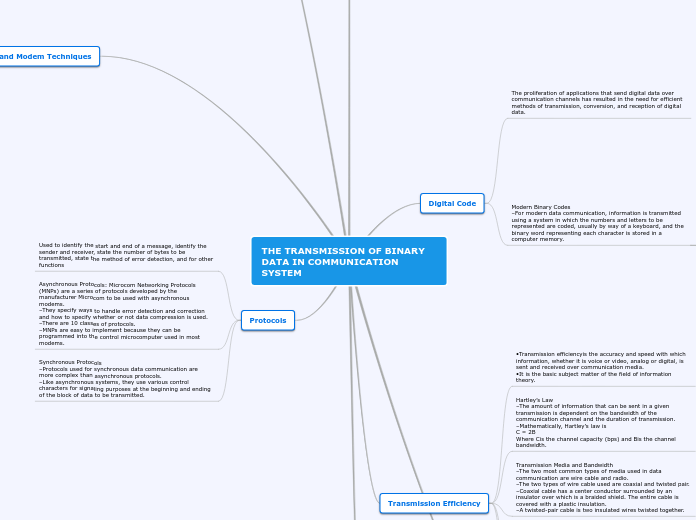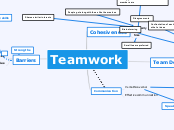Creating Quality Online Courses
A Meditation
If this mind map reflects the things that we think are important in online teaching, then they are no different that the things that are important in on-the-ground teaching. That implies, logically, that good on-the-ground teachers will automatically make good online teachers. We think that we know that the logic is flawed somehow. There is some difference that must still be accounted for.
Good teachers in on-the-ground, traditional face-to-face courses may do many of these things "instinctively," without conscious effort. They cannot help but bring their personality to the classroom. Classroom management requires maintaining civility and safety.
To replicate such qualities in online courses may require a more conscious effort. It is like the need for emoticons in online communication in order to overcome the sterility of the written word.
Perhaps the missing element is this:
The implicit knowledge, skills, and attitudes (need a better word. Zeitgeist?) of the good classroom teacher must become explicit knowledge, skills and attitudes in the online environment.
Assess Creatively
Culture of Integrity
Brain based systems
Reflective
Physical
Cognitive
Social
Other domains
Psychomotor
Affective
Get high on Bloom's Taxonomy
Revised taxonomy
Remembering
Objectives written on the remembering level (the lowest cogitive level) requires the student to recall or recognize specific information.
Understanding
Objectives written on the understanding level, although a higher level of mental ability than remembering, requires the lowest level of understanding from the student.
Applying
Objectives written on the applying level require the learner to implement (use) the information.
Analyzing
Objectives written on the analysing level require the learner to break the information into component parts and describe the relationship.
Evaluating
Objectives written on the evaluating level require the student to make a judgment about materials or methods .
Creating
Objectives written on the creating level require the student to generate new ideas, products and ways of viewing things.
Boom's Taxonomy
1 Knowledge
2 Comprehension
3 Application
4 Analysis
5 Synthesis
6 Evaluation
Analysis
analyze, appraise, calculate, categorize, compare, contrast, criticize, differentiate, discriminate, distinguish, examine, experiment, question, test
The student distinguishes, classifies, and relates the evidence, assumptions, or structure of the statement or question.
Synthesis
arrange, assemble, collect, compose, construct, create, design, develop, formulate, manage, organize, plan, prepare, propose, set up, write.
The student originates and combines ideas into a product, plan, or proposal that is new to him or her.
Evaluation
Verbs
appraise, argue, assess, attach, choose compare, defend, estimate, judge, predict, rate, score, select, support, value, evaluate.
Definition
The student can appraise, assess or critique the concept on a basis of specific criteria.
Collaborations
Media productions
Papers
Projects
Team up
Is the lone instrutor a thing of the past?
Should online courses be produced by teams?
Media is prduced by teams
Take Time
Interaction
Email questions and answers need to be manged
Studies have found that online instrauctors spend more contact time than on ground instructors.
Preparation
The American Federation of Teachers report on guidelines for good practice in distance education acknowledges that it takes “anywhere from 66 to 500 percent longer” to prepare an online course than a face-to-face one,….
From "Going For Distance"
Protocols and Procedures
Create Your Online Persona
Be enthusiastic
Inteact honestly
Give your viewpoints
Use an Avatar?
Reveal your peronality
Post your voice
Post your picture
Re-engineer
Use media
Slides
Video
Motion
Sound
Clear plans
Engineer explicitly for
Community
Communication
Personalization
Involvement
Think online
Experiments
Virtual tours
Links
Need to Engineer Carefully
Going For Distance
Learning From Online
Begin with outcomes
Learning activities
Clear objectives
Beware of
Burdening the computer system
Copyright violations
Just copying on ground materials online
Sage on the stage
Course in a box
Make it
Meaningful
Emotional
Relevant
Course Delivery Methods
Joseph Fuller Aug 15, 2009 7:34 PM
Perhaps no other her issue is more important to facillate learning, than being able to really connect with students. Let me suggest a short 'formula' I learned from Dr. Larry Holt at UCF back in 2002. It's called R. E. M., and means, relevant, emotional, and meaningful. The idea is that the content and style in which we instructors present, whether delivered online, face to face, or hybrid, must be engaging in order for learning to occur. If students can't relate, or the material doesn't generate passion, or is seen as having no value in today's context, our efforts to educate fail. Fortunately, social media is providing new tools that help enhance connectivity, but the responsibility for learning must begin first and foremost with with instructor methodology for course delivery.
Dr. J. Pat Fuller
Personal
Re: Multi-tasking/21st Century Workforce
Kevin Jordan Dec 18, 2008 8:50 AM
Bless your heart, Linda, for saying what needs to be said here. We're losing a lot. Our stock in trade was small classes. Now we're doing everything we can to max them out and leave the very classroom behind.
Everything the educational experts told us in the 1960's and '70's was about the importance of making a personal connection with our students: that learning is a shared personal experience and that some of our most important communication is non-verbal. Their research was a reaction to the new telecourses: transparent attempts to cut costs while packing in students to remote theaters outfitted with cheap non-interactive TV sets. WCEU broadcast segments of Oceanus that students could watch at home in their underwear, as long as they showed up at the college twice a semester to take a test. It wasn't interactive and it didn't work. Nobody learned anything and the colleges lost credibility. They responded by constructing interactive remote studios funded largely by grants from the telecommunications industry. Now we are told by the computer industry that Internet courses are the way to go, and they sell us the idea by giving us discounted hardware and then fleecing us on the software, especially on the increasingly necessary (and expensive) software support because the software wasn't fully developed when they sold it to us. The big pitch is that today's students won't get it if it's not on the net. Progress.
Bull. Students learn by personal contact, the same way they always have, with someone who cares enough to look them in the eye. The rest is fashion: irrelevant, fleeting, and meaningless. It's motivated by profiteering vendors selling twenty-first century snake oil.
We're supposed to teach critical thinking. Maybe we should start doing it.
Follow Kolb's Training Cycle
Apply Andragogy
Give students control
Re: Lectures are becoming a thing of the past
Mary Craig-Oatley - Jan 18, 2010 1:53 PM
Using the technology in the classroom by us is necessary now, as you have indicated, to keep the students' attention. I also have found that making the students do presentations and encouraging them to use the technology makes for some great learning activities. The students actually have a chance to move upwards on the Bloom's taxonomy when they can synthesize it themselves.
Engage the senses and participation
How much people remember when exposed to
various learning methods based on the five senses
(see, hear, feel, touch and smell)
* 10 percent of what they read (see and often touch)
* 20 percent of what they hear
* 30 percent of what they see
* 50 percent of what they see and hear
* 70 percent of what they say or discuss with others (primarily “hear” plus critical listening skills)
* 80 percent of what they experience personally (can be any or all of the five senses engaged in an
activity)
* 90 percent of what they say and do (“hear” plus usually one or more of the other five senses engaged in
an activity)
* 95 percent of what they teach to someone else (at least one of the five senses engaged in an activity
plus critical listening or observation skills)
According to Glaser’s classic research, retention rate is proportional to the degree in which one or
more of the five senses is used or engaged during the learning process. To achieve retention rates at 70
percent or above (recall that 70 is borderline “average” on a traditional straight grading scale), interaction
with the environment or others is a required curriculum element. So, in corporate learning scenarios,
either in-house or at professional conferences and seminars, hands-on and “teach backs” are essential
learning elements for those editors who expect an 80 percent or better retention rate from their staff as a
result of the company’s time and monetary investment in training efforts. (
Crucial Assumptions
For those who study andragogy, the following five items are identified as “crucial assumptions” that
specifically set adult learners apart from child learners:
1. SELF-CONCEPT: adults primarily rely on self-directed learning rather than being constantly dependent
on others
2. EXPERIENCE: adult learners are increasingly able to draw from their own experiences for continued
learning
3. READINESS TO LEARN: adults seek education that is directly related to their real-world roles
4. ORIENTATION TO LEARNING: adults look at learning as something that can be concretely applied
immediately to address and solve problems as compared to children who look at learning as an abstract
collection of subjects whose application is postponed
5. MOTIVATION TO LEARN: adults are motivated to learn from an internal desire to be more aware
rather than from external sources such as family, teachers or coaches
(see hyperlink for source)
Motivation to Learn
Orientaion to Learning
Readiness to Learn
Experience
Self Concept
Principles
Principles:
1. Adults need to be involved in the planning and evaluation of their instruction.
2. Experience (including mistakes) provides the basis for learning activities.
3. Adults are most interested in learning subjects that have immediate relevance to their job or personal life.
4. Adult learning is problem-centered rather than content-oriented.
(see hyperlink for source)
Assumptions
Andragogy makes the following assumptions about the design of learning:
(1) Adults need to know why they need to learn something
(2) Adults need to learn experientially,
(3) Adults approach learning as problem-solving, and
(4) Adults learn best when the topic is of immediate value.
(see hyperlinkfor source)
Technology of Androgogy
(see hyperlink for source)
The technology of andragogy was to be a seven step process. He called for adult educators to:
set a cooperative learning climate,
create mechanisms for mutual planning,
arrange for a diagnosis of learner needs and interests,
enable the formulation of learning objectives based on the diagnosed needs and interests,
design sequential activities for achieving the objectives,
execute the design by selecting methods, materials, and resources, and
evaluate the quality of the learning experience while rediagnosing needs for further learning.
Knowles's Dream
Challenge
Respect students as adults
Explain to students why learn it
Build community
Embrace surprises
Provide for
Self expression
Collaboration
Opportunity
Safety
Encourage discussion
Include
Various learning styles
Foster equality
Be Aware
Of information overload
Need for structuring
Need for filtering
Of instructional design
Rubrics
Activiiies
Objectives
Outcomes
Of learning theories
Andragogy
Glasser
Multiple intelligences
Learning styles
Of technical challenges
Variations in media literacy
Dial up connections
Online students who do not own computers
Of policies and procedures
Rubric for evaluation of your online course
Disability accomodations
Academic integrity
Terms of Use
Of internet limits
External links only with disclaimer
Link to media, do not embed it
Store media on our servers
Optimize graphic files
Of technical support
IT Support
Of resources for students
Academic Support Center
Student orientation
Of resources
IS Support
Academy Resources area
Learnig Object Repositories
On the web
In our system
eMentors
Faculty Center
Discussions
Training
Seminars
Brown bag sessions
Florida Online
Online opens new avenues for creativity, including creative cheating.
Things that occur naturally in on ground classes need to be conciously and deliberately included in online classes.
Negotiation
Enthusiasm
Personality









